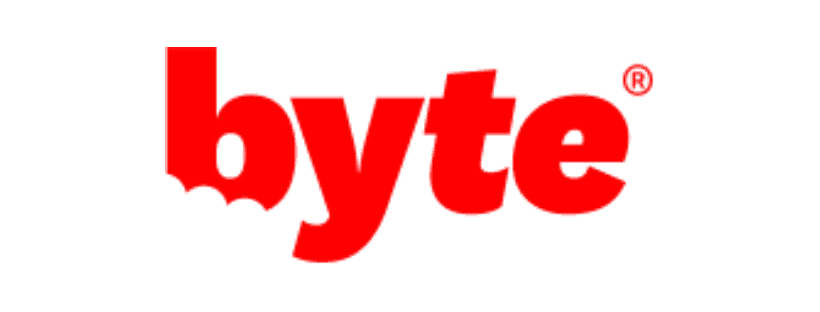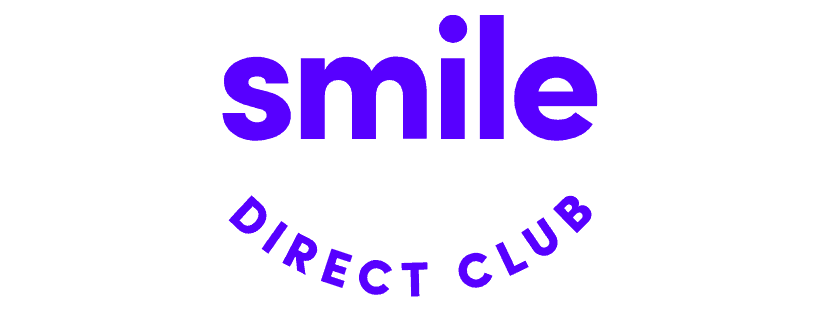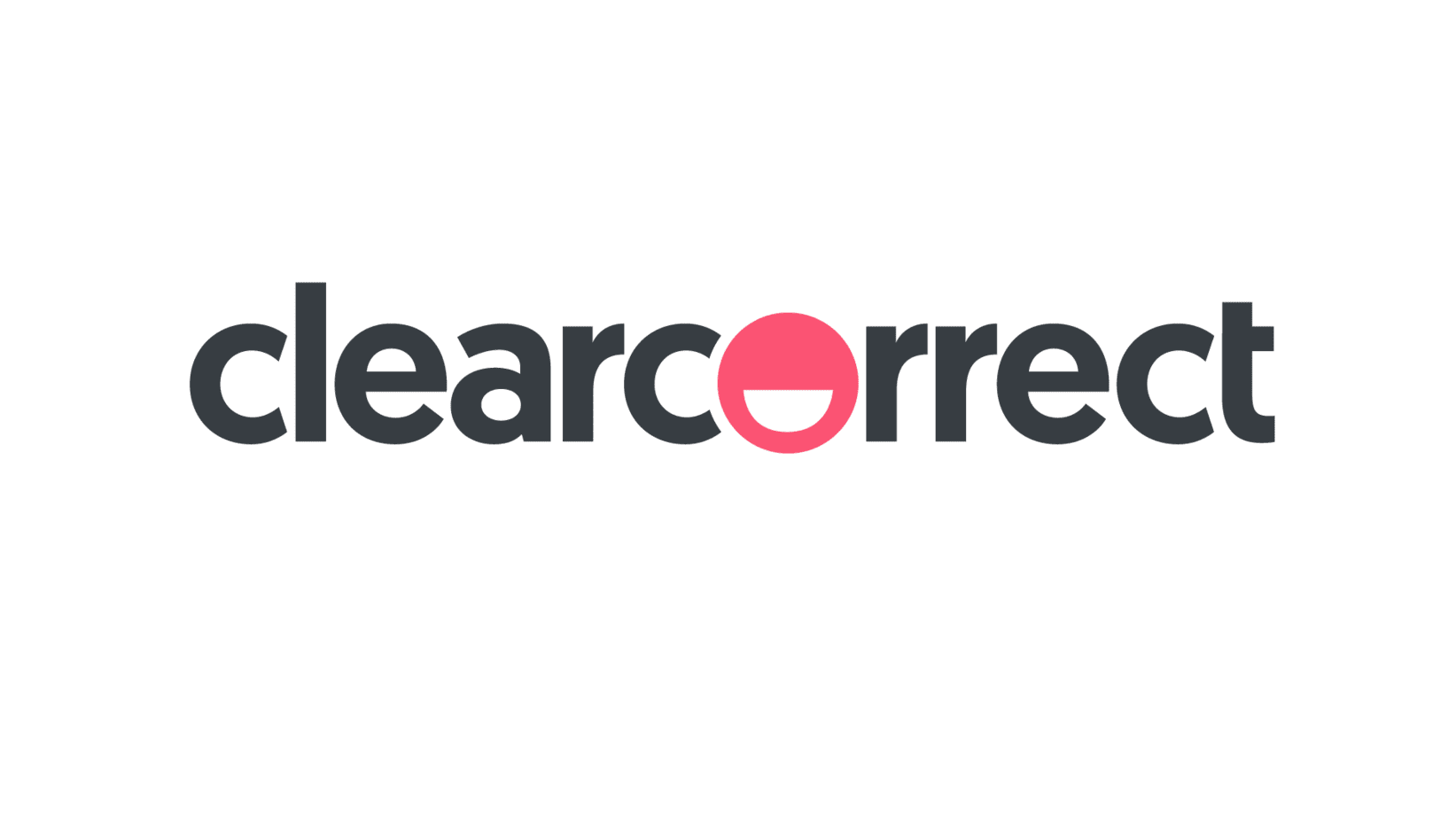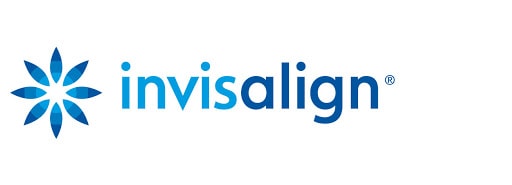
In-person care. At-home monitoring. Candid has combined both in a unique “hybrid” treatment program. Provided by a local dentist who collaborates with Candid to oversee your entire treatment remotely, Candid is a streamlined clear aligner system with the perks of at-home treatment and traditional in-person care combined.
However, Candid treatment is certainly not without its downsides, and there are several other clear aligner brands out there. In this guide, we’ll outline the best alternatives to Candid (including at-home and in-office options) so you can confidently choose the best fit for you.
Table of Contents
How we Select and Review Clear Aligner Companies
Smile Prep has reviewed a total of 12 clear aligner brands in-depth. Review candidates include not only the most popular brands, but also several lesser known options that, in our view, have something unique to offer.
Smile Prep’s reviews offer the perspective of a well-informed consumer. This means that our views are not professional opinions, and we do not independently verify the claims the manufacturers make about their products. Instead, the value that we offer is to collect the claims that clear aligner companies make about their products and compare them for your convenience. We also analyze customer perspectives, including hundreds of reviews that we gathered directly from Smile Prep’s visitors. In many cases, we have also corresponded directly with company representatives and/or sampled products or impression kits first hand. You can learn more about our review process by checking out our publishing principles.
Best At-Home Candid Alternatives
If you’re drawn to Candid because you can complete most of the treatment remotely, then an at-home clear aligner service might be right up your alley. Instead of visiting a local dentist, one of the company’s dentists will design your treatment remotely, and they’ll mail the aligners straight to you. You won’t get the advantage of hands-on care, but by eliminating dental office visits, these services have made clear aligner treatment much more convenient and affordable.
Byte
Since 2018, Byte has delivered efficient results for their customers and contributed innovative technology to the teledentistry space. Byte says their average treatment plans are 4–5 months long, plus they offer personalized customer service, competitive pricing, and accessible financing. If you want an aligner brand that’s on the cutting edge of technology and trends — yet doesn’t sacrifice on quality of service — Byte could be a great option.
Pros
- At $1,999, Byte treatment is significantly more affordable than Candid.
- Byte’s high-frequency vibration device, the “HyperByte,” helps provide a more comfortable aligner fit (according to the company). Plus, while we are not dental professionals, our team reviewed studies suggesting that similar devices can encourage faster dental shifts for some people. Byte includes this device in the cost of their aligner bundle.
- The Byte-for-Life warranty guarantees your smile forever. If your teeth ever shift after you’ve finished treatment, Byte will create new aligners to correct them, as long as you’ve purchased their retainers every six months and worn them as directed.
- Byte provides financing plans for every customer, regardless of credit score. Candid’s financing options are dictated by your specific dentist’s office.
- If you’d rather not wear your aligners for 22+ hours per day, Byte offers a nighttime-only treatment that only requires ten hours per day.
Cons
- Byte does not yet have any physical locations. You’ll need to purchase an impression kit and submit molds of your teeth to get started, which can be difficult.
- Compared to Candid, Byte doesn’t provide the same level of clinical oversight during treatment. They recommend submitting photos of your teeth every two weeks, but only require it if you have certain conditions.
Byte - The Bottom Line
Do you like the convenience of Candid treatment, but not the price point? If so, Byte is worth considering.
Special Offer: Save 80% off your impression kit + $100 of your treatment + free BrightByte Pro whitening
SmileDirectClub
SmileDirectClub is the largest and most experienced at-home clear aligner company out there. They kickstarted home aligners’ popularity and have straightened over 1.8 million smiles since 2014.
SmileDirectClub has a huge retail presence with 100+ SmileShops nationwide, and they continue finding ways to facilitate more convenient treatment.
Pros
- SmileDirectClub has 100+ “SmileShop” locations and a network of 1,000+ dental offices where you can kick off your treatment. The dentist, however, won’t be involved in your entire treatment like Candid.
- SmileDirectClub’s financing options don’t require a credit check, so every customer has access to a payment plan.
- SmileDirectClub offers a nighttime-only option that only requires you to wear aligners for ten hours per day instead of the typical 22. Candid does not have a comparable treatment option.
- They offer prorated refunds for unused and unopened aligners at any time during treatment. And afterward, their Lifetime Smile Guarantee covers your smile for life — as long as you purchase new retainers every six months and wear them as advised.
- SmileDirectClub’s $2,250 price tag might be higher than some at-home competitors, but it’s typically more affordable than Candid.
Cons
- SmileDirectClub only asks for photo check-ins every 90 days; Candid requires them every 14 days, providing much more frequent oversight.
- Online reviews suggest that SmileDirectClub’s customer support has not always been as responsive or helpful as Candid’s.
SmileDirectClub - The Bottom Line
No home aligner provider has a longer résumé than SmileDirectClub, so if you’re looking for a time-tested company that offers superior convenience, check them out.
Special Offer: SmileDirectClub often provides steep discounts off its impression kit - up to $60 off
NewSmile
NewSmile is one of the youngest companies on the market, but also one of the most intriguing. They made their debut in Canada in early 2020, then expanded to the U.S. shortly after. In those few short years, NewSmile’s low price, remote oversight, interest-free financing, and satisfaction guarantee have already made waves. It has some room for growth but is still a solid option.
Pros
- With a $1,595 price tag, NewSmile has one of the lowest sticker prices in the industry — one that can be thousands cheaper than Candid. Plus, they approve everyone for financing.
- NewSmile says most people finish treatment in just 4–6 months, so their treatment can take less time than Candid.
- NewSmile offers the convenient option of nighttime-only treatment, something Candid does not.
- NewSmile requires videos of your teeth every two weeks, so their oversight is just as frequent as Candid’s (although they don’t keep a local dentist in the loop like Candid does).
- While many budget-friendly options skip all the extras to keep costs low, NewSmile includes your impression kit, retainers, and whitening kit. That’s a couple of hundred dollars’ worth of bonus products.
Cons
- NewSmile doesn’t have any clinics that provide dental scans, so there’s no in-person component to their treatment and you’ll need to create impressions of your own teeth to get started.
- As a younger company than the others on this list, NewSmile doesn’t have a wealth of experience, and they’ve yet to accumulate a lot of reviews, so it’s tough to gauge their customer experience.
NewSmile - The Bottom Line
NewSmile pairs affordable prices with accessible financing, remote oversight, and the option for nighttime-only aligners. While they’re new and there aren’t tons of reviews available, we still feel they are a solid choice.
Special Offer: Receive $300 Off NewSmile (Summer Sale!)
Best In-Office Candid Alternatives
If you like Candid for their in-person care, at-home aligners might not be your cup of tea. But there are a few traditional, in-office options that provide the hands-on touch of a local dentist or orthodontist. While these clear aligners can often correct severe, complex misalignments, they also take a little longer to achieve your final results. But if you want face-time with your dentist, you can’t beat them.
ClearCorrect
ClearCorrect is an extremely thorough and comprehensive clear aligner treatment, one that involves trips to the dentist throughout the process. The second-largest clear aligner producer in the U.S., their products can treat even severe cases and bite issues, and while they might be more robust than Candid, they’re also less streamlined.
Pros
- ClearCorrect’s in-office application allows for the addition of “engagers” — tiny, tooth-colored shapes that assist with complex tooth movements. This means that ClearCorrect can treat a whole spectrum of severe dental and jaw misalignments.
- ClearCorrect charges dentists less for their aligners and lab fees than Invisalign, encouraging dentists to pass along these savings to their patients.
- Like Invisalign, ClearCorrect can be administered by a standard dentist (not necessarily an orthodontist), which makes treatment more convenient and accessible.
- Throughout ClearCorrect treatment, patients make office visits every 4–6 weeks, which gives their dentist time to assess their progress, make adjustments, and head off any potential problems.
Cons
- ClearCorrect’s office visits provide peace of mind, but they’re also time-consuming, and their treatment doesn’t typically involve remote monitoring like Candid’s does.
- ClearCorrect treatment usually takes 12–18 months compared to Candid’s 6–9.
- Even though ClearCorrect can be less expensive than Invisalign, it can still be pricier than Candid.
SureSmile
Founded in 2007, SureSmile is another industry stalwart. Their in-person care can treat a wider scope of misalignments than Candid, and the company says that their patients are less likely to need refinements after treatment. Despite this, they boast lower average prices than Invisalign—closer to what you might pay for Candid. Since they don’t have a specific mandatory scanner, providers can save money and pass those savings on to you.
Pros
- SureSmile aims to make treatment affordable. On the low end, treatment costs $2,000 and tops out around $6,000. This means that treatment for mild cases will cost about the same as it would with at-home aligners.
- SureSmile’s planning software gives the doctor a lot of control over even the smallest elements of aligner design. This results in a reduced need for refinements at the end of treatment.
- You can choose from two plans, Complete and Select, to get the option best for your budget. Complete gives you all the aligners you need for three years while Select lets you pay per aligner.
- Your doctor can choose the cut of your aligners based on whether you need more force (straight cut) or more discreet treatment (scalloped cut).
Cons
- Even though SureSmile’s regular office visits provide intensive oversight, they’re more time-consuming than Candid’s remote check-ins.
- SureSmile’s attachments give their aligners more power, but can also make them more noticeable.
- SureSmile’s average timeline (6–18 months) can be longer than Candid’s, but that’s often because they treat more severe cases.
3M Clarity Aligners
3M isn’t the first name to come to mind for orthodontic treatment — but maybe it should be. Their Clarity Aligners offers incredible teeth-moving power thanks to their unique attachment placement. Since 3M also makes Clarity Clear Braces, orthodontists can also design a combination treatment that uses them simultaneously with aligners.
Pros
- Clarity Aligners aren’t the only ones that use attachments, but they use them uniquely. Sometimes, orthodontists will place them behind your teeth rather than in front, helping to keep your treatment discreet. They can also accommodate multiple attachments per tooth, facilitating more complex movements.
- Most companies use a single type of plastic in their aligners, but 3M Clarity uses two, each with its own unique strengths and applications. Your orthodontist can select one or the other, or alternate between plastics for different stages of treatment.
- The aligners are thinner than most competitor options. This keeps them comfortable and less likely to impact your speech.
- Clarity uses the same planning software for their aligners and their clear braces, allowing for integrated planning of combination treatment — something other companies don’t offer.
Cons
- 3M Clarity usually costs more than Candid, with an average price of around $5,000.
- Like other in-person aligner treatments, Clarity requires regular trips to the dentist’s office, which are less streamlined than Candid’s remote monitoring.
- 3M Clarity’s average timeline (6–24 months) can be longer than Candid’s, but that’s often because they treat more severe cases.
Invisalign
This is the brand that sparked the clear aligner revolution. And today, Invisalign is still the most established and widely used aligner brand in the U.S. Through regular office visits and supplemental orthodontic attachments, their aligners can treat just about any dental misalignment you throw at it, even ones that Candid can’t handle.
Pros
- Invisalign can correct a wide range of dental and jaw misalignments, while Candid is typically best for mild and moderate crowding and spacing.
- Dentists can add Invisalign’s proprietary Smartforce attachments, which help their aligners exert more force and make more intricate dental shifts. Candid aligners can’t incorporate attachments.
- Candid treatment uses industry-leading technology, like their SmartTrack plastic, iTero scanners, and ClinCheck software. Candid providers might use similar tech, but they might also use inferior alternatives.
- Invisalign has over 40,000 providers in the US, far more than any other clear aligner producer, which makes their treatment widely accessible. Candid has just 300+.
- Their aligners are backed by more than two decades of experience and research, and they’ve transformed millions of smiles.
Cons
- Invisalign costs $3,000–$8,000 on average, which is often more expensive than Candid.
- The regular office visits, while reassuring, are more time-consuming than Candid’s remote monitoring.
- Invisalign’s 12–18 month average treatment time is longer than Candid’s. But as we’ve mentioned, that’s because in-office aligners often handle more severe cases.
How Should I Evaluate My Options?
Every clear aligner company excels in different ways, so when making a decision, consider your timeline, budget, and preferences. It’s important to avoid focusing too much on just one aspect of a particular company, like price or treatment time. When evaluating your options, we recommend researching and considering all of the following categories:
Scope of Treatment
Who is in charge of your treatment plan? Do you receive in-person oversight? Can the aligners incorporate attachments? All these things can influence a treatment’s scope of treatment. Before anything else, you’ll want to make sure a treatment can actually correct your condition.
Affordability
If you’re on a budget or just a habitual bargain hunter, low costs might be your priority. This isn’t just the initial cost that you might see online. You should also consider potential financing options, payment plans, and what items the sticker price includes.
Convenience
Whether or not a particular treatment requires office visits is one way to evaluate convenience, but there’s a lot more to it. Startup methods, treatment schedules, and wait times each play a role as well.
Appearance
Clear aligners are pretty discreet, but by experimenting with different plastics, surfaces, and designs, home aligner companies have made them even more so. Aesthetics somewhat depend on personal preferences, though, so what looks “best” might vary based on a customer’s tastes and style.
Patient Experience
Contact channels, responsiveness, helpfulness, and refund policies all play into the quality of a company’s customer care.
Further Reading
While you should consider all the aspects above, it’s natural to focus on one or two in particular. That’s why we’ve created guides showing which home aligner companies excel in each category:
Final Thoughts
At the end of the day, we think Candid is an excellent all-around option. There’s a reason they’re #2 in our overall rankings. Despite all of Candid’s advantages, we understand that they won’t be a perfect fit for every situation.
Your teeth are important, so make sure to evaluate all of your options carefully before making a final decision. In the meantime, we’re here to help you measure each one up against your unique priorities so you can take a confident step toward your smile goals!
Frequently Asked Questions
What is the cheapest alternative to Candid?
If you’re looking for quality aligners on a budget, AlignerCo has the lowest prices out there. They’re not the only company that’s dedicated to working with your finances, though. Our review of the Most Affordable Clear Aligners offers a full overview of the most cost-effective clear aligners on the market.
Are home aligners better than Invisalign?
Invisalign is a powerful and intensive option, although it’s not one that you can complete from home like the companies outlined in this guide. Instead, your dentist will create and administer your treatment during regular office visits. This makes Invisalign a bigger investment of time and money ($3,000–$8,000 on average), but it also allows your dentist to treat more severe cases of crowding and spacing, as well as bite issues.
If you’re worried about the severity of your condition or would rather have one-on-one dentist interaction as part of your treatment, Invisalign could be a great fit.
Which clear aligner companies offer nighttime-only treatment?
SmileDirectClub, Byte, NewSmile, and AlignerCo. Byte, NewSmile, and AlignerCo charge more for nighttime treatment than daytime treatment, while SmileDirectClub charges the same amount. Candid recommends wearing your aligners for 22+ hours per day for best results, so they don’t offer nighttime treatment.
Which clear aligner company is right for me?
If you have a complex misalignment or prefer in-office care, it’s tough to beat a comprehensive in-office option like ClearCorrect, SureSmile, 3M Clarity, or Invisalign. But if you’re looking for a service you can complete entirely at home, Byte is a great choice. In the end, it all comes down to your specific condition and priorities.
What is the most convenient alternative to Candid?
SmileDirectClub takes convenience a step further than the competition. They have easier startup options and more flexible treatment plans than most competitors. If convenience is your top priority, read our review of the Most Convenient Clear Aligners for the full scoop on some other great options.
Which conditions can clear aligners treat?
It depends on which clear aligner treatment you choose. Comprehensive in-office brands like Invisalign and ClearCorrect can correct almost any misalignment that braces can. At-home aligners, on the other hand, are primarily designed to treat mild-to-moderate cases of crowding and spacing, along with some mild bite issues.
Does insurance cover clear aligner treatment?
It depends on your provider and plan. If your condition affects your overall oral health and you pursue an in-office treatment, insurance is more likely to cover your treatment than if you’re making cosmetic corrections. But having orthodontic benefits doesn’t automatically mean you’ll be covered. You should check with your insurance provider to find out for sure.
How do I get started with clear aligners?
If you’re going with Invisalign, Candid, or another in-office option, you’ll need to find a provider near you and schedule an appointment. The dentist or orthodontist will provide an initial consultation as well as take X-rays and teeth scans that will inform your aligner design.
For at-home options, you’ll need to order an impression kit and create molds of your teeth, then send them to your company of choice. Or, if you choose SmileDirectClub, you can visit one of their physical locations for a free teeth scan, which replaces the impression kit process.
Is at-home treatment safe?
At-home clear aligner treatment plans are always designed and/or approved by a licensed dentist or orthodontist — as long as you’re buying from a legitimate clear aligner service.
The main concern regarding the safety of fully-remote clear aligner treatment is the lack of face-to-face care. Since you won’t be seeing a dentist in-person during treatment, you won’t receive the same level of support that you’d get with traditional in-office aligners like Invisalign or ClearCorrect. That said, a recent NIH-funded survey found the majority of at-home aligner customers were satisfied with their results, and only 6.6% experienced side effects necessitating a visit to their local dentist.
Read our guide to safe home teeth straightening treatment for more information.
Do clear aligners hurt?
Customers often report experiencing tightness or discomfort during the first 1–2 days of wearing a new set of aligners, after which the discomfort subsides. Some companies provide “chewies” or other devices to help ensure a more comfortable aligner fit.







Join The Discussion: